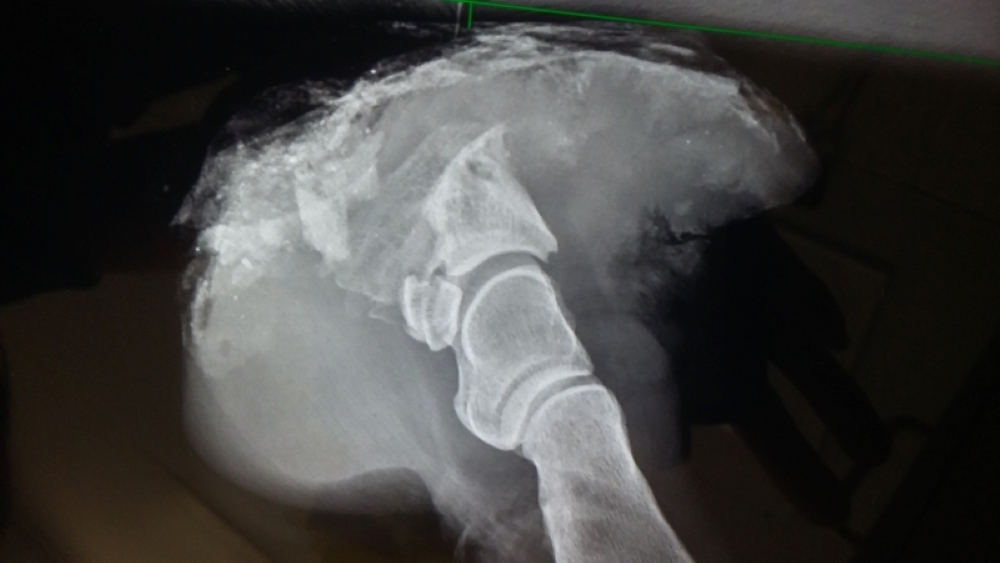24 hour contact: 01707 666297
New RVC study reveals the importance of monitoring insulin in predicting laminitis in ponies
A new study led by the Royal Veterinary College (RVC), in partnership with the Waltham PetCare Science Institute, which investigated predictors of laminitis in ponies has found that the concentration of insulin in the blood is a key indicator of those most at risk of developing the condition. This research has the potential to improve the abilities of owners and vets to identify high risk ponies and then take measures to reduce the risk of them developing the condition.

Laminitis affects the soft tissue (laminae) that attaches the pedal bone to the hoof wall and is a common condition, affecting native pony breeds most frequently. Laminitis can be recurrent and potentially serious for both horses and ponies, leading to extreme pain, instability of the pedal bone within the hoof capsule and in some cases the animal may need to be euthanised. Its prevalence is estimated at one case per 200 horse-years in the UK and for ponies it is thought to be much higher.
There are three types of laminitis of which endocrinopathic laminitis is the most common. Endocrinopathic laminitis includes laminitis associated with disorders of the hormone insulin. This study investigated practical ways vets can measure, and owners can identify, predictors of the condition. The research team included Edward Knowles, the lead author and PhD Student, and Nicola Menzies-Gow, Professor in Equine Medicine (primary PhD supervisor), and Jonathan Elliott, Professor of Veterinary Clinical Pharmacology at the RVC as well as Professor Patricia Harris, Head of the Equine Studies group at the Waltham Petcare Science Institute (both PhD co-supervisors).
The study involved 374 ponies from the South of England that had not previously suffered from laminitis. The ponies were kept according to their normal routine and were visited every six months for four years. Information was collected on the ponies’ diet and exercise, and they were weighed, measured and examined. Blood samples were also taken, including one to measure their insulin response to a sugar syrup given orally. If a pony developed laminitis during the study period, the results of their examination and tests before laminitis were compared with the ponies in which laminitis did not develop.
Importantly, the researchers found that the concentration of the hormone insulin in the blood, either at rest or after oral sugar syrup, was the most important predictor of whether an individual would develop the condition in the future. They also discovered the overall risk of laminitis was five cases per 100 pony-years.

By measuring insulin concentrations, the team of RVC and WALTHAM™ researchers could crucially identify ponies as low, medium or high risk of future laminitis episodes. Over a one-year period, they found that the risk of laminitis in the low-risk group was too small to detect, but more than one third of the high-risk group would develop laminitis. Over a longer period of four years, they found that around 70 per cent of high-risk ponies would be expected to develop laminitis, whereas this was only the case for around six per cent of low-risk ponies.
Surprisingly, concentrations of the hormone ACTH, which is associated with one of the hormone disorders encompassed by endocrinopathic laminitis, was not found to be useful for predicting future laminitis episodes.
Importantly, these findings can be applied to clinical practice. While clinicians have understood that insulin concentrations are important for some time, this research quantifies the actual risk of laminitis associated with the hormone insulin in a way that can be understood by both owners and vets. it is hoped that the research will improve vets' and owners’ ability to identify the ponies at the highest risk of laminitis and therefore allowing them to institute management, including dietary, changes to help reduce the risk of these ponies developing this painful and potentially life-threatening condition.
Edward Knowles, PhD Student at the RVC and lead research on this paper, said:
“The research helps us to identify the ponies at highest risk of laminitis so that we can take steps to reduce the risk. Whilst many factors are associated with laminitis insulin concentrations are the most important.”
The study was kindly funded by MARS Petcare UK and the Mellon Fund.
Read the full report here: https://pubmed.ncbi.nlm.nih.gov/35263471/
Notes to Editors
For media enquiries, please contact:
- Jasmin De Vivo jasmin.devivo@plmr.co.uk or rvc@plmr.co.uk
- Press Line: 0800 368 9520
About the RVC
- The Royal Veterinary College (RVC) is the UK's largest and longest established independent veterinary school and is a Member Institution of the University of London.
- It is one of the few veterinary schools in the world that hold accreditations from the RCVS in the UK (with reciprocal recognition from the AVBC for Australasia, the VCI for Ireland and the SAVC for South Africa), the EAEVE in the EU, and the AVMA in the USA and Canada.
- The RVC is ranked as the top veterinary school in the world in line with the QS World University Rankings by subject, 2021.
- The RVC offers undergraduate and postgraduate programmes in veterinary medicine, veterinary nursing and biological sciences.
- A research led institution with 79% of its research rated as internationally excellent or world class in the Research Excellence Framework 2014.
- The RVC provides animal owners and the veterinary profession with access to expert veterinary care and advice through its teaching hospitals and first opinion practices in London and Hertfordshire.
About the Waltham Petcare Science Institute
The Waltham Petcare Science Institute is Mars Petcare's pet research center. Our work focuses on the nutritional and behavioral needs of pets, as well as preventive health. We use this knowledge to support development of innovative products and services, advancing science to deliver our Purpose: A BETTER WORLD FOR PETS™. The WALTHAM™ Equine Studies Group, which is headed by Dr Pat Harris, MA, PhD, VetMB, DipECVCN, MRCVS, is dedicated to advancing the science of horse nutrition and provides the scientific support for Mars Horsecare globally including the BUCKEYE™ Nutrition, SPILLERS™, and WINERGY™ brands. By collaborating with key research institutes and universities around the world its work remains at the forefront of equine nutritional science.

